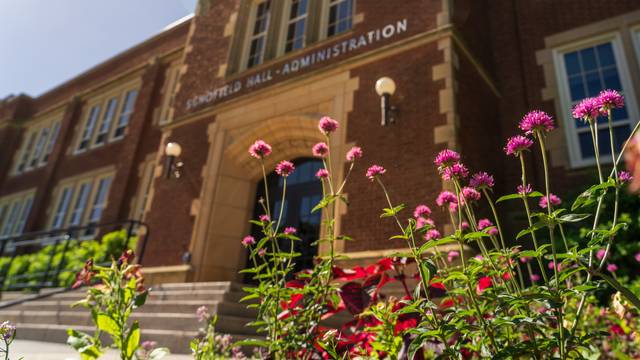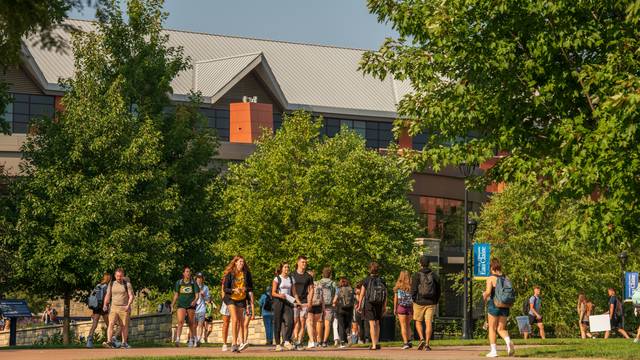Winter Safety: Slips, Trips, and Falls Prevention
During the winter months, exposure to slips and falls greatly increases due to weather conditions such as freezing rain, snow, and ice. According to the U.S. Department of Labor, slips, trips, and falls make up most general industry accidents, which account for:
- 15% of all accidental deaths per year, the second-leading cause behind motor vehicles
- About 25% of all reported injury claims per fiscal year
- More than 95 million lost workdays per year — about 65% of all workdays
The goal of an effective winter weather plan is to remove snow and ice from all walking surfaces and incorporate continuous walking surface monitoring and removal at critical times such as before the start of work and at shift changes, or when melting and refreezing occurs. Plans should be in writing and reviewed after every winter season. Pay special attention to common trouble spots such as parking areas, sidewalks, stairs, and ramps. About one-third of all slips on icy surfaces occur in parking areas. Some of the specific contributors to the rise in slips, trips, and falls during winter include:
- Snowmelt from wet footwear, creating slippery floors inside.
- Icy conditions on surfaces outside, including sidewalks and parking lots.
- Snow covering and obscuring tripping hazards like curbs.
- Employees slip when rushing to get out of the cold.
Be aware of the parking area and sidewalks for:
- Lighting – well-illuminated areas permit greater visibility to avoid icy areas.
- Drainage – melt that cannot drain to sewers or grass will become ice when it freezes.
- Dislocated or damaged items – curbs, wheel blocks, and similar items are frequently moved or damaged by plows, creating new hazards to users.
- Cracks in the sidewalk – snowmelt and water get into the cracks and freeze and overtime, continuous freezing and refreezing expands the crack, elevating the risk for trips and falls.
Safe Winter Driving
Driving conditions in the winter months can be full of treacherous hazards including winter ice, poor visibility, strong winds, snow, and freezing rain. Additional preparations can help make a trip safer or better to deal with an emergency.
Perhaps the danger of all is “black ice.” Black ice forms on a roadway, usually due to snow melting and re-freezing. Since it is almost invisible, drivers fail to recognize black ice conditions and may drive at normal speeds–often resulting in very serious accidents. Always be alert to the possibility of black ice when temperatures are near or below freezing. Pavement that looks dry but may be darker in color and dull looking should alert you to the presence of black ice!
Winter Driving Tips
If possible, avoid driving during winter weather, as even small amounts of snow and ice can make traveling on roads extremely dangerous. If you must travel by car, here are some driving tips to help you stay safe.
- Keep windshields clear - Scrape snow and ice to ensure full visibility.
- Increase following distance - Put five to six seconds of time between you and the vehicle you're following - especially snowplows.
- Be patient - Allow more time - and daylight if possible - to get to your destination and remember that detouring through a median typically causes problems.
- Always pay attention to the road - Traffic flow can change instantly, and braking times increase dramatically with snow or ice.
- Add braking time to exit freeways and interstates - Exits and overpasses get slick during winter events and require even more braking time.
- Know when not to use cruise control - Don't use cruise control in snow and icy conditions.
- Prepare a winter survival kit – Pack an emergency kit containing water, food, and other items you may need to help you endure an emergency or road closure until help arrives.
- Turn on headlights - It's critical to be seen on snowy and foggy days.
- Speed limits – These speed limits are based on normal road conditions so reduce your speed when there is ice or snow.
- Snowplow - Stay at least 200 feet back if you are behind a snowplow. A snowplow may not see you; you must keep away from it!
- Bridges, ramps, and overpasses freeze first - Use extreme caution traveling on these roads and be extra careful.
- Skidding on ice occurs - Know how to safely maneuver a vehicle if skidding on ice occurs.
- Snow and Ice - Maintain at least three times the normal following distance when driving on snow and ice.
- Black Ice - Be aware of 'black ice' which is a nearly invisible layer of ice that can develop on roads and cause a driver to rapidly lose control. Black ice is especially common at night.
Summary
With the arrival of winter, freezing temperatures and snow may create slippery walking surfaces on UW-Eau Claire campus. Risk Management, Safety and Sustainability encourages all students, faculty, staff, and visitors to wear the appropriate winter footwear or shoes with traction and be observant of areas that could create a slip and fall hazard.
In addition to working and walking in winter, driving during the winter presents its own set of hazards. Driving in the winter may include slowing down and giving yourself plenty of distance between vehicles in front and to the side of your vehicle to allow for safe stopping distances. It is essential to consider these extra safety precautions to avoid accidents. When driving in snowy conditions, it is critical to be smooth with the steering wheel, accelerator and brakes and avoid sudden movements to always maintain control of your vehicles. By implementing these strategies in your daily life, the winter season will pass by safely.


